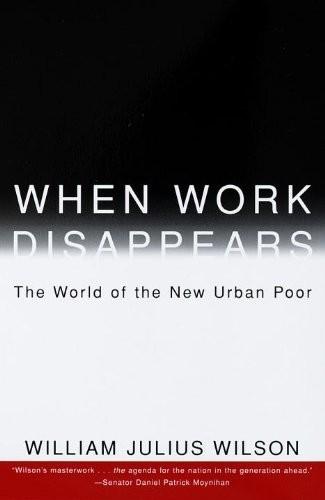
When Work Disappears: The World of the New Urban Poor
by
William Julius Wilson
Published 1 Jan 1996
The foundation of this vision emphasizes issues and programs that concern the families of all racial and ethnic groups so that individuals in these groups will come to see their mutual interests and join in a multiracial coalition to move America forward; it promotes the idea that Americans have common interests and concerns that cross racial and class boundaries—such as unemployment and job security, declining real wages, escalating medical and housing costs, the scarcity of quality child care programs, the sharp decline in the quality of public education, and the toll of crime and drug trafficking in all neighborhoods. This vision encourages Americans to see that the application of programs to combat these problems would benefit everyone, not just the truly disadvantaged; to recognize that the division between the suburbs and the central city is partly a racial one and that it is vitally important to emphasize city-suburban cooperation, not separation; and, finally, to endorse the idea that all groups, including those in the throes of ghetto joblessness, should be able to achieve full membership in society because the problems of economic and social marginality spring from the inequities in society at large and not from group deficiencies.
…
Although the wages of low-skilled women (those with less than twelve years of education) rose slightly in the 1970s, they flattened out in the 1980s, and continued to remain below those of low-skilled men. The wage gap between low-skilled men and women shrank not because of gains made by female workers but mainly because of the decline in real wages for men. The unemployment rates among low-skilled women are slightly lower than those among their male counterparts. However, over the past decade their rates of participation in the labor force have stagnated and have fallen further behind the labor-force-participation rates among more highly educated women, which continue to rise.
…
The disappearance of work in many inner-city neighborhoods is in part related to the nationwide decline in the fortunes of low-skilled workers. Fundamental structural changes in the new global economy, including changes in the distribution of jobs and in the level of education required to obtain employment, resulted in the simultaneous occurrence of increasing joblessness and declining real wages for low-skilled workers. The decline of the mass production system, the decreasing availability of lower-skilled blue-collar jobs, and the growing importance of training and education in the higher-growth industries adversely affected the employment rates and earnings of low-skilled black workers, many of whom are concentrated in inner-city ghettos.
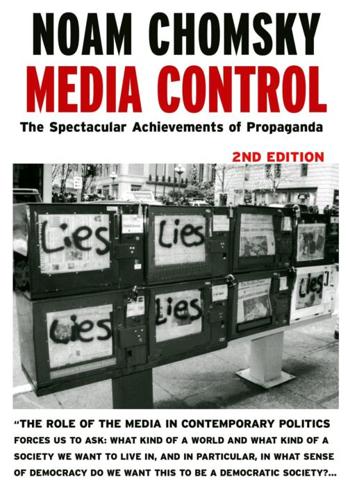
Media Control: The Spectacular Achievements of Propaganda
by
Noam Chomsky
Published 1 Jan 1974
If you look at the domestic programs of the administrations of the past ten years-I include here the Democratic opposition-there's really no serious proposal about what to do about the severe problems of health, education, homelessness, joblessness, crime, soaring criminal populations, jails, deterioration in the inner citiesthe whole raft of problems. You all know about them, and they're all getting worse. Just in the two years that George Bush has been in office three million more children crossed the poverty line, the debt is zooming, educational standards are declining, real wages are now back to the level of about the late 1950s for much of the population, and nobody's doing anything about it. In such circumstances you've got to divert the bewildered herd, because if they start noticing this they may not like it, since they're the ones suffering from it. Just having them watch the Superbowl and the sitcoms may not be enough.
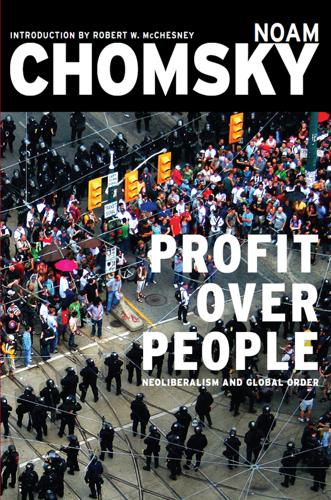
Profit Over People: Neoliberalism and Global Order
by
Noam Chomsky
Published 6 Sep 2011
In an important recent study he points out that there is no doubt that the third world’s compulsory economic liberalism in the nineteenth century is a major element in explaining the delay in its industrialization” and in the very revealing case of India, the “process of de-industrialization” that converted the industrial workshop and trading center of the world to a deeply impoverished agricultural society suffering a sharp decline in real wages, food consumption, and availability of other simple commodities. “India was only the first major casualty in a very long list,” Bairoch observes, including “even politically independent third world countries [that] were forced to open their markets to Western products.” Meanwhile Western societies protected themselves from market discipline, and developed.
…
Nixon’s moves were among several factors that led to a huge increase in unregulated financial capital and a radical shift in its use, from long-term investment and trade to speculation. The effect has been to undermine national economic planning as governments are compelled to preserve market “credibility,” driving any economies “toward a low-growth, high-unemployment equilibrium,” Cambridge University economists John Eatwell comments, with stagnating or declining real wages, increasing poverty and inequality, and booming markets and profits for the few. The parallel process of internationalization of production provides new weapons to undermine working people in the West, who must accept an end to their “luxurious” lifestyle and agree to “flexibility of labor markets” (not knowing whether you have a job tomorrow), the business press orates happily.

Wall Street: How It Works And for Whom
by
Doug Henwood
Published 30 Aug 1998
.^ Back in the 1980s, you used to read about the rising debt burden on households; for some reason, you don't read about it much in the 1990s anymore, even though the burden has continued to grow. You do still read about the concentration of wealth. The two phenomena are rarely seen as linked. But because of the decline in real hourly wages, and the stagnation in household incomes, the middle and lower classes have borrowed more to stay in place; they've borrowed from the very rich who PLAYERS have gotten richer. The rich need a place to earn interest on their surplus funds, and the rest of the population makes a juicy lending target.
…
Bond prices instantly fell WALL STREET over a full point, a moderately dramatic move, ignoring news elsewhere in the statistical release showing that average hourly earnings grew only three cents, to $11.06 — an annual rate of just over 3%, in line with inflation. For U.S. workers, who've experienced 20 years of declining real hourly wages, even this strong employment growth has been unable to deliver any wage improvement. To Wall Street eyes, however, that's good news: "wage inflation" is under control for now. There's nothing the bond ghouls hate more than real wage increases for anyone but themselves. Despite that wage sluggishness, and the good behavior of the general price indexes, the consensus is that the Fed will tighten again before long.
…
Clinton's political goal of positioning himself as a Democrat who is not feared on Wall Street." Growth must be throttled back to no more than 2.5%, or maybe 3% tops — below levels that might make possible sharper reductions in unemployment, strengthen labor's bargaining position, and maybe even reverse, however temporarily, the 20-year decline in real wages. This story may be a plant, an attempt to calm the markets through leaking; Bradsher is a reporter who has had no trouble serving as a frictionless conduit for administration or Fed propaganda. But it does fit with events; challenging the Wall Street demand for slower growth would be political dynamite — just the kind of fight a not-feared-on-Wall-Street Democrat would shy away from.

Year 501
by
Noam Chomsky
Published 19 Jan 2016
We turn to Nicaragua directly.33 The effects of IMF Fundamentalism, now administered with renewed fervor, “have been catastrophic” in Central America, the Jesuit journal Envío reports. Inflation has increased. Fiscal deficits have not declined as anticipated, but GOP growth has stagnated since 1985 and declined since 1988. Real wages have substantially fallen almost everywhere in Latin America, and the distribution of income is becoming even more skewed than before. “The word ‘development’ has disappeared from Latin America’s economic vocabulary”—though “profit” is on everyone’s lips, for the foreigner and the domestic islands of privilege.
…
Since the onset of “Menem’s Miracle” in 1989, “Neo-liberal private pillage has set up a system where individual wealth depends on public decay and economic regression,” with some 40 percent of the economically active population unemployed or underemployed, proliferating shanty towns, factories closed and not replaced by new enterprises, exploitation of the state as “an instrument for personal enrichment and private pillage,” reduction of expenditures for health, education and welfare to all time lows, negative growth rates, decreasing yearly rate of investment, and declining real wages. By now, over 60 percent of the 12 million inhabitants of Buenos Aires are not connected to the sewer system, one reason for the return of diseases that had been eradicated decades ago. The “speculative economy, reinforced by a neo-liberal economic policy, which impoverishes most of the population while destroying Argentina’s internal market and productive capacity, and scarce resources has generated a Hobbesian world, a savage struggle to survive while the elite continue to reap windfall profits.”
…
As usual, we do not learn that the famed “trickle down” policies have, in the past, produced a tiny trickle indeed, though read closely, the current reports indicate why the same can be expected this time around. The indicators look fine from Washington and Europe, Kamm reports, but they conceal rapid concentration of wealth, increased poverty including “critical poverty,” declining real wages, and the other usual concomitants of “miracles.” Former Brazilian President José Sarney writes that “in all countries” of Latin America, the foreign banks and other usual beneficiaries reap their rewards, “and what’s left is unemployment, slave wages, and terrible social indicators.” “The rich continue to get richer, the gap between them and the middle and lower classes widen,” and none of the policies that are so promising “have been able to wipe out poverty” (Nash), a curious and unexpected failure to achieve their goal, we are to understand.42 The most phenomenal success story of all is Chile, with its “prospering free-market economy generated by Gen.
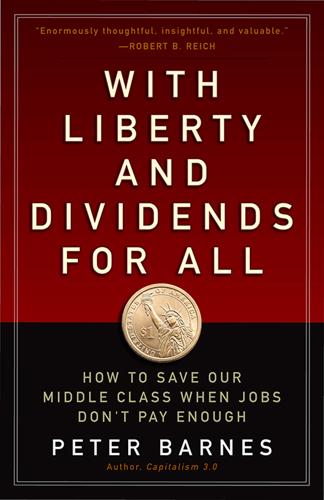
With Liberty and Dividends for All: How to Save Our Middle Class When Jobs Don't Pay Enough
by
Peter Barnes
Published 31 Jul 2014
The best way to provide that flow is with dividends from co-owned wealth. Every American would get the dividends wired to his or her bank account or debit card. The amount of the dividends would vary from year to year depending on the income earned during the year. Total dividends would never exceed that income. In an age of declining real wages, shared wealth dividends would be an essential prop for our middle class. But they’d be more than that. Like social insurance, co-owned wealth dividends would connect Americans to each other and across generations. They’d be an affirmation that Americans belong to a society in which joint inheritances and productivity gains benefit everyone.
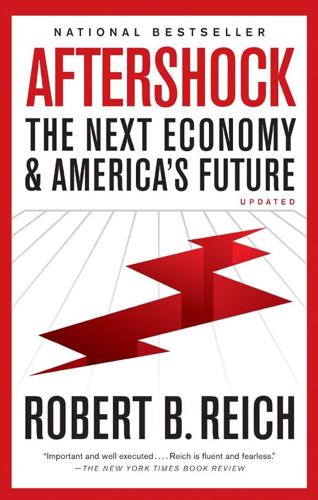
Aftershock: The Next Economy and America's Future
by
Robert B. Reich
Published 21 Sep 2010
His bank rescue and stimulus packages, combined with the Fed’s low interest rates, prevented the Great Recession from turning into another Great Depression. But the nation has not recommitted itself to the basic bargain. The 2010 health reform legislation was a step in the right direction but small in relation to the overall challenge. Consequently, most Americans will continue to experience relatively high unemployment and flat or declining real wages. Economic growth will be hampered. Growth, it should be noted, is not an end in itself. It is a means to better lives for all, generating not only higher incomes and possibilities for more personal consumption but also making room for the consumption of public improvements that benefit all—an atmosphere less polluted by carbon, good schools, better health care.
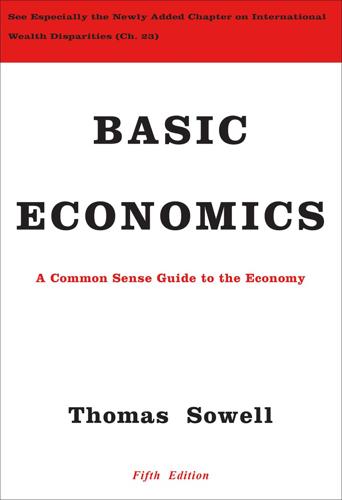
Basic Economics
by
Thomas Sowell
Published 1 Jan 2000
Alarms in the media and in politics about statistics showing declining real wages over time have often been describing a statistical artifact rather than an actual fact of life. It was during a period of “declining real wages” that the average American’s consumption increased dramatically and the average American’s net worth more than doubled. A further complication in measuring changes in the standard of living is that more of the increase in compensation for work takes the form of job-related benefits, rather than direct wages. Thus, in the United States, total compensation rose during a span of years when there were “declining real wages.” International Comparisons The same problems which apply when comparing a given country’s output over time can also apply when comparing the output of two very different countries at the same time.
…
A further inflationary bias in the consumer price index or other measures of the cost of living is that many goods which are increasing in price are also increasing in quality, so that the higher prices do not necessarily reflect inflation, as they would if the prices of the same identical goods were rising. The practical—and political—effects of these biases can be seen in such assertions as the claim that the real wages of Americans have been declining for years. Real wages are simply money wages adjusted for the cost of living, as measured by the consumer price index. But if that index is biased upward, then that means that real wage statistics are biased downward. Various economists’ estimates of the upward bias of the consumer price index average about one percentage point or more.
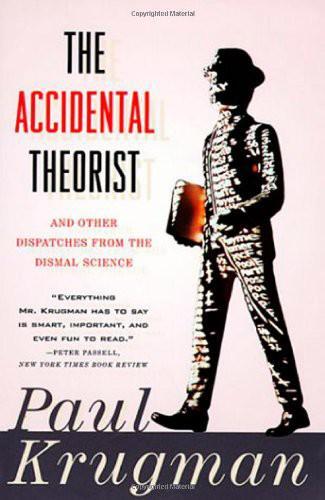
The Accidental Theorist: And Other Dispatches From the Dismal Science
by
Paul Krugman
Published 18 Feb 2010
The long inflation from 1500 to 1700 is mainly attributed to the flood of silver from Spain’s New World conquests; in the modern world governments can print money instead of mining it, and have done so repeatedly both to pay their bills and, more creditably, in an attempt to trade off higher prices for lower unemployment. Fischer regards such explanations as inadequate. He insists both that inflation is only one symptom of a deeper process—one that also produces growing population, rising inequality, declining real wages, and ultimately a crisis—and that this process is repetitive, that in a qualitative sense all price revolutions are alike. In particular, the travails of the West in recent decades are typical of the end game of a price revolution—and we can take comfort from the fact that such difficult periods are inevitably followed by a prolonged “equilibrium.”

Democracy at Work: A Cure for Capitalism
by
Richard D. Wolff
Published 1 Oct 2012
The government-enhanced wealth at the top does not “trickle down” in the real world. Instead, boards of directors continue to see their self-interest in not sharing the recovery funds poured into their hands. Thus we experience continuing high unemployment, massive numbers of home foreclosures, declining real wages and job benefits, and inaccessibility of credit for personal borrowing. Stagnant consumption and investment are the results. They undermine the recovery of business and the stock markets. The global capitalist crisis deepens. What is to be done? The political and economic establishment simply repeats its usual mainstream mantra: maintain the post-2007 trickle-down program with maximum hype about the government’s efforts to end the crisis and wait until the crisis depresses wages and the costs of doing business enough that profit opportunities prompt capitalists to resume investing.
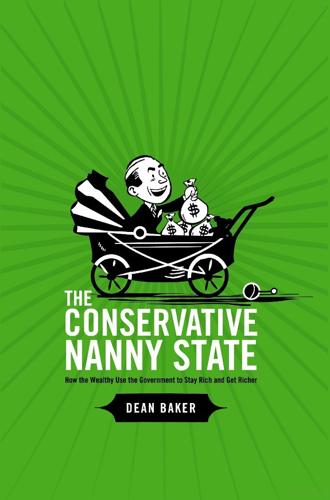
The Conservative Nanny State: How the Wealthy Use the Government to Stay Rich and Get Richer
by
Dean Baker
Published 15 Jul 2006
On the other hand, if costs continue to grow along the path currently projected, it is inevitable that the number of uninsured will rise through time, even if there is an expansion of public sector health care programs. There is one other point about the importance of reversing conservative nanny state policies that redistribute income upward. In a period of stagnant or declining real wages, the public will be very resistant to efforts to raise taxes to support more public services of any type. On the other hand, in a climate of rising wages and general prosperity, there is less objection to diverting a portion of this prosperity towards meeting public needs. This means that if the economy is producing real gains for the bulk of the population, it will be much easier to obtain the revenue needed to address deep-seated social problems.
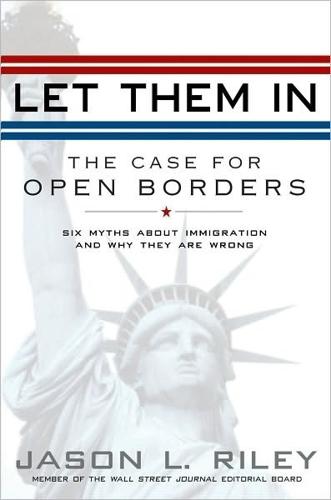
Let Them In: The Case for Open Borders
by
Jason L. Riley
Published 14 May 2008
Two economists with the Urban Institute, Harry Holzer and the late Paul Offner, found that employment rates for black men between sixteen and twenty-four actually dropped in the 1990s, a decade of strong economic growth and job creation. Among the primary reasons cited for low labor participation rates in this subgroup were declining real wages, a significant skills gap between black and white workers, high black incarceration rates, and the disappearance of manufacturing and other blue-collar jobs in recent decades. Holzer and Offner also reported that “employers perceive a stronger work ethic among immigrants of all racial groups, and a greater willingness to accept and retain low-skill jobs.”
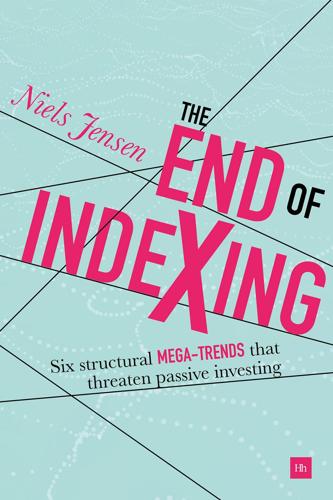
The End of Indexing: Six Structural Mega-Trends That Threaten Passive Investing
by
Niels Jensen
Published 25 Mar 2018
It is not quite so dramatic in the UK, but the number is still high. Here is the problem. Across the world, many who live this way have experienced a drop in real wages in recent years, so even if the overall employment situation is quite robust, as there are no savings to fall back on, many have suffered a fall in living standards. The decline in real wage growth started all the way back in the 1970s and has coincided with an increase in corporate profits. More recently the trend has gained momentum, though, to the extent that real wages are now falling in some countries, which has had the effect of suppressing aggregate consumer demand even further.
…
It is a multifaceted concept, and it is foolhardy to try to reduce it to a single figure.” 100 Last time I looked, only about 15% of the 11,000+ hedge funds generated any alpha. 101 Source: Elroy Dimson, Paul Marsh and Mike Staunton (2017,1). 102 Where banks offload part of their loan book to long-term investors. 103 Only one European country has experienced a bigger decline in real wages (i.e. in living standards) this millennium, and that is the UK. 104 Exhibits 12.3.1–12.3.2 include hedge funds only. By not including long-only funds, am I saying they are not subject to the same dynamics? Not at all, but I don’t have access to corresponding data on long-only funds. 105 Moody’s (2017).
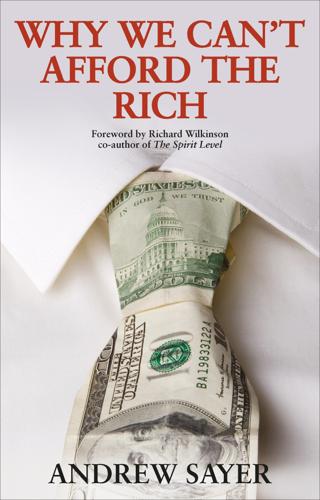
Why We Can't Afford the Rich
by
Andrew Sayer
Published 6 Nov 2014
So they are contributing as well as receiving; indeed, many are just getting deferred earned income. Maybe we should call it an entitlement rather than a ‘benefit’, which suggests an act of charity. • Typically, the unemployed are in and out of work as short-term jobs become available, rather than unemployed permanently. And thanks to declining real wages since 2008, the numbers of ‘the working poor’ have risen, substantially exceeding the out-of-work poor.11 • Many are unable to work because of debilitating illnesses or serious impairments. In the UK the current ConDem coalition has waged a shocking campaign against the sick and disabled, attempting to force people who are in no condition to work to find work or face benefit cuts
…
‘Welfare’ is now coming to be used in the UK in the American pejorative sense, as something the inadequate are ‘on’, at the expense of the rest of us.150 This is a kind of class war waged by the Right at the level of the meaning of words. But the remarkable thing about the return of the rich is the lack of overt resistance, indeed the strange acceptance of austerity policies for the 90%, even after lower- and middle-income groups have seen years of declining real wages and benefits and erosion of public services. Many of those on low incomes have voted, against their own interests, for parties that protect and further plutocracy, the Tea Party in the US being the most striking example. Whipping up hostility to the poor, to immigrants, refugees and asylum seekers all helps to distract attention from the rich.
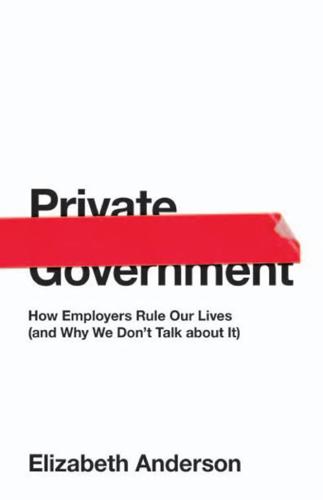
Private Government: How Employers Rule Our Lives (And Why We Don't Talk About It)
by
Elizabeth S. Anderson
Published 22 May 2017
The most authoritative social historian of early modern England, Keith Wrightson, sees production for the market a risk small households were “constrained to make” rather than an opportunity.10 The changes of the sixteenth and early seventeenth centuries produced poverty on an unprecedented scale, and a rising number of households dependent on wage-labor, during an era of declining real wages. Probably half the population relied mainly on wage labor by the middle of the seventeenth century. The national income of England doubled at least in the century up to 1640, but, as in other periods, the benefits of this expansion were unevenly shared and the results were greater inequality and increased social polarization.

The Rise of the Network Society
by
Manuel Castells
Published 31 Aug 1996
And yet the process of historical transition toward an informational society and a global economy is characterized by the deterioration of living and working conditions for a significant proportion of labor.132 This deterioration takes different forms in different contexts: the rise of unemployment in Europe; declining real wages (at least until 1996), increasing inequality, and job instability in the United States; underemployment and stepped-up segmentation of the labor force in Japan; informalization and downgrading of newly incorporated urban labor in industrializing countries; and increasing marginalization of the agricultural labor force in stagnant, underdeveloped economies.
…
In his study with Wolff, Howell shows that while the share of low-skilled workers in the US decreased across industries, the share of low-wage workers increased in these same industries. Several studies also suggest that higher skills are in demand, although not in shortage, but higher skills do not necessarily translate into higher wages.137 Thus, in the US, while decline in real wages was more pronounced for the lowest-educated, salaries for the college-educated also stagnated between 1987 and 1993.138 The direct consequence of economic restructuring in the United State s is that in the 1980s and the first half of the 1990s family income plummeted. Wages and living conditions continued to decline until 1996 in spite of a strong economic recovery in 1993.139 Furthermore, half a century after Gunnar Myrdal pointed to the “American Dilemma,” Martin Carnoy, in a powerful book, documented that racial discrimination continues to increase social inequality, contributing to marginalizing a large proportion of America’s ethnic minorities.140 However, in 1996–2000, the sustained boom led by information technology and the new economy changed the trend, and increased average real wages at about 1.2 percent per year.
…
Much has been made of the shareholders democracy in the new forms of capitalism, but table 4.29 shows the extreme concentration of stock ownership in 1995, even when we include stock plans, mutual funds, individual retirement accounts, and other instruments of popular capitalism. While America is an extreme case of income inequality and declining real wages among the industrialized nations, its evolution is significant because it does represent the flexible labor market model at which most European nations, and certainly European firms, are aiming.141 And the social consequences of such a trend are similar in Europe. Thus, in Greater London between 1979 and 1991 real disposable income of households in the lowest decile of income distribution declined by 14 percent, and the ratio of real income of the richest decile over the poorest almost doubled in the decade, from 5.6 to 10.2.142 Poverty in the UK substantially increased during the 1980s and early 1990s.143 And for other European countries, taking the incidence of child poverty as an indicator of the evolution of poverty, on the basis of data collected by Esping-Andersen, between 1980 and the mid-1990s child poverty increased by 30 percent in the US, by 145 percent in the UK, by 31 percent in France, and by 120 percent in Germany.144 Inequality and poverty increased during the 1990s in the US, and in most of Europe.145 I take the liberty of referring the reader to volume III, chapter 2, for a summary presentation of data and sources on inequality and poverty, both for the United States and for the world at large.
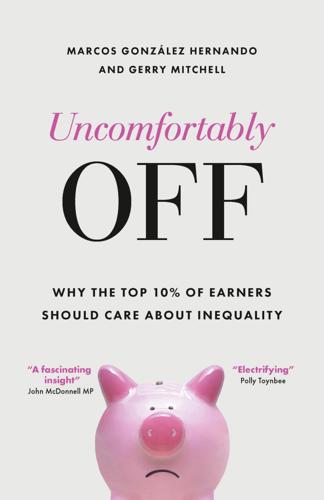
Uncomfortably Off: Why the Top 10% of Earners Should Care About Inequality
by
Marcos González Hernando
and
Gerry Mitchell
Published 23 May 2023
And as the Intergenerational Commission pointed out, ‘non-degree routes have not picked up the slack’.76 Despite acknowledging their luck in having access to a university grant, avoiding the levels of educational debt seen today, and joining the labour market before the current credential inflation, our respondents nevertheless underplayed the importance of networks and social capital accessed by attending top universities and private schools, which seem to be ever more important. Many seemed to retain a belief in meritocracy and education as its vehicle. Whenever we asked for the drivers of poverty, education was at the forefront, regardless of the fact that we have seen declining real wages and casualisation in parallel to increasing educational attainment. In a recent poll by The New Statesman, 60% of British people believe that an individual can change their social class in their lifetime, despite only 25% saying they have themselves changed class. The poll results also demonstrated that young people in the UK are becoming less confident about their future: ‘Many worry they will never be financially stable, a rising proportion don’t feel in control of their lives, and nearly half feel hopeless because of unemployment.’77 Jonathan Mijs, assistant professor of sociology at Boston University, who specialises in perceptions of meritocracy and inequality, attributes this to a gap between aspiration, belief and lived experience.

The New Urban Crisis: How Our Cities Are Increasing Inequality, Deepening Segregation, and Failing the Middle Class?and What We Can Do About It
by
Richard Florida
Published 9 May 2016
By 2013, the top 5 percent of Manhattan households were earning eighty-eight times what the poorest 20 percent did. The city’s 400,000 or so millionaires outnumbered the entire populations of New Orleans, Pittsburgh, Cleveland, or Minneapolis. But many more New Yorkers were seeing their living standards eviscerated by a combination of declining real wages and escalating housing prices. In August 2013, a New York Times poll found that 55 percent of voters believed that Bloomberg’s policies favored the rich. Asked whether New York had become “too expensive for people like you to live in,” 85 percent answered yes.4 Propelled by the populist backlash to the city’s widening economic divide, de Blasio’s insurgent campaign put inequality front and center.
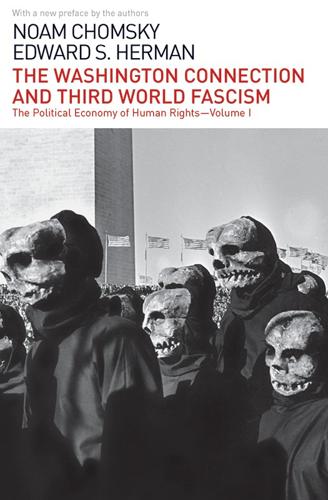
The Washington Connection and Third World Fascism
by
Noam Chomsky
Published 24 Oct 2014
He recounts the destruction of Uruguayan democracy, offering as the sole explanation “foreign intervention,” i.e., the application of the Kissinger doctrine of establishing “stable regimes” in Latin America; the systematic torture of 25,000 people, counting only the most severe cases; and the decline of real wages to a 1977 level that is at 60% of the 1962 level. A response to “terrorism” in Laqueur’s sense? Wilson Ferreira points out that the military coup that turned Uruguay into a chamber of horrors took place after the Tupamaros had been “completely destroyed”; “from June 1973 until today, there has not been a single subversive action.
…
Peasants turned to rebellion (stigmatized as “Communist terror”) when very moderate demands were met with mounting force and violence by the United States and its local allies drawn from the wealthy elites.111 As Jonathan Fast observed, “the Philippine counterinsurgency effort of the early 1950s served as a laboratory for later American involvement in Vietnam,” where General Lansdale “tried to repeat his Philippine success with Ngo Dinh Diem.”112 From 1946 to 1972 the economy of the Philippines expanded rapidly within its neo-colonial and dependency framework. The salient features of this “success” are described by van der Kroef: “declining real wage rates,113 persistent extreme disparities in income levels, the seemingly unchecked power of private U.S. capital (especially in the context of the operations of a few Filipino family corporations)”; and “graft and corruption prevalent everywhere, but particularly in government, whose machinery of justice was felt to benefit only the rich.”114 The democratic facade of the Philippines was extremely brittle in this society dominated by external interests and a tiny and very wealthy elite, including the U.S. favorite Ferdinand Marcos.
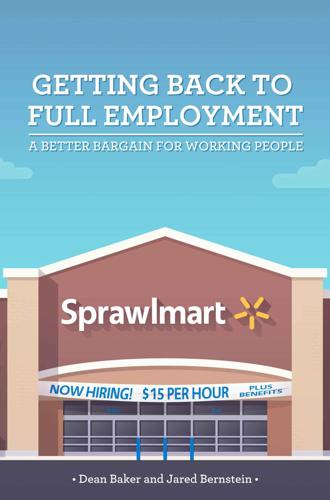
Getting Back to Full Employment: A Better Bargain for Working People
by
Dean Baker
and
Jared Bernstein
Published 14 Nov 2013
On the other hand, if real wages could be reduced in accordance with the drop in productivity, then workers could keep working. If employers cannot push through cuts in nominal wages, the result will be higher unemployment in a context in which there is little or no inflation. However, if there is a modest amount of inflation, then the necessary decline in real wages can be accomplished by pay increases that lag the rate of inflation. When inflation “greases the wheels” of wages, modest rates of inflation can be associated with higher rates of employment.[29] There could be an ongoing tradeoff in which 2.0 to 3.0 percent inflation rates are associated with a lower level of unemployment and higher level of output than are inflation rates of 2.0 percent or less.

What's Next?: Unconventional Wisdom on the Future of the World Economy
by
David Hale
and
Lyric Hughes Hale
Published 23 May 2011
But the irregulars get lower wages per hour—40 percent lower per hour for part-timers—and few of the benefits that apply to regular workers, including the twice-yearly bonuses that can amount to as much as a third of income, company-provided portions of health insurance, and pensions. The increase in irregular workers was not a display of flexibility—it was wage austerity that has resulted in declining real wages in every year but one since 2000. For much of the DPJ, the answer is to end flexibility and restore lifetime employment as much as possible. But there is no going back. The DPJ needs to learn from Sweden and Denmark, which have combined the best of market flexibility with security. Companies rise and fall.
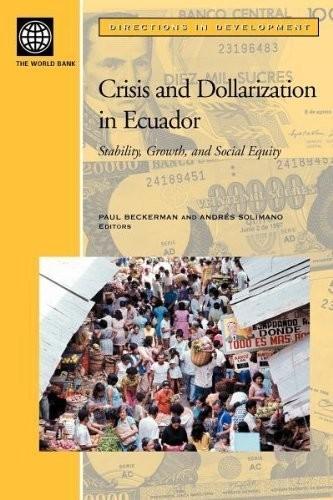
Crisis and Dollarization in Ecuador: Stability, Growth, and Social Equity
by
Paul Ely Beckerman
and
Andrés Solimano
Published 30 Apr 2002
Dollarization did not stop inflation immediately, because adjustment to a new equilibrium level for the real exchange rate, undervalued when dollarization was launched, was reached through inflation. In addition, GDP started to recover following official dollarization, helped by a gradual recovery of confidence and favorable external shocks. In turn, unemployment has slowly declined and real wages have become more stable, although real wage levels are rather depressed in dollar terms. Historical and Structural Features of Ecuadoran Economy and Society The deep economic crisis of the late 1990s that preceded dollarization in Ecuador was, as argued in this book (see chapters 2 and 3), the culmination, in dramatic overtones, of an economic and governance crisis associated with several structural characteristics of Ecuadoran economy and society.
…
The exchange rate chosen for conversion of the money supply in sucres to dollars (25 sucres per dollar) was a very undervalued rate. As a consequence, there was a sharp reduction in real wages in dollars. As CRISIS AND DOLLARIZATION: AN OVERVIEW 13 inflation continued at a significant (although declining) pace after dollarization, real wages suffered from continuous inflation and slack in the labor market. However, as of early 2002, about two years after dollarization was adopted, the real exchange rate has started to appreciate and real wages to recover. In addition, following the pattern of other exchange-rate-based stabilization plans, a recovery of consumption and an increase in relative prices of nontradable goods and assets accompanied a recovery in economic activity, with declining unemployment and some improvement in deteriorated social conditions.
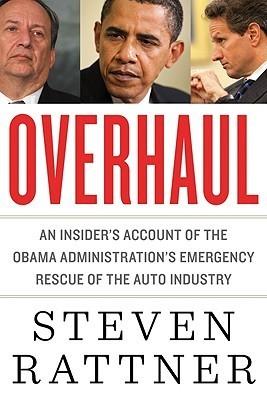
Overhaul: An Insider's Account of the Obama Administration's Emergency Rescue of the Auto Industry
by
Steven Rattner
Published 19 Sep 2010
(Haley had made sure it had a GPS, since none of us knew our way around Detroit.) Ron drove, with Brian, Diana, and me as passengers. Our first stop was Solidarity House. As I had told Ron when we first met, I believed in saving jobs. I had also written op-eds about America's growing income inequality and about the declining real wages of workers. I believed that organized labor could be a constructive part of the solution as long as it focused on those issues, rather than on featherbedding, trying to protect workers who were not pulling their weight, and blindly fighting technological change. During my eight and a half years at the New York Times I'd been a card-carrying member of the Newspaper Guild and had watched the company's eleven unions make all those mistakes.

Digital Disconnect: How Capitalism Is Turning the Internet Against Democracy
by
Robert W. McChesney
Published 5 Mar 2013
Instead of a flowering economy that makes the quality of life today vastly superior to that of forty or fifty years ago, millions go without work, much of our productive potential lies fallow, and our public sector is in squalor. People are working longer hours, with less vacation and later retirement, for stagnant or declining real wages, with less security, in an environment increasingly unable to sustain human civilization. Poverty has reached levels not seen for generations and found more commonly in the global South.26 In 2012 U.S. businesses held $1.73 trillion in liquid assets—or cash, in shorthand—that they were not investing for apparent lack of profitable options.

Utopia or Bust: A Guide to the Present Crisis
by
Benjamin Kunkel
Published 11 Mar 2014
Robert Brenner, in The Economics of Global Turbulence (2006), calls this the Full Employment Profit Squeeze thesis. The thesis has proved remarkably durable in the face of the stubborn persistence, since the ’70s, of weak economic performance among the rich countries—even with the return of mass unemployment, the worldwide enfeeblement of the labor movement, and the stagnation or outright decline of real wages. How can the effect of slower growth have so outlived its notorious cause? According to the thesis, post–Golden Age workers still enjoy too much power at the levels of shop floor, industry, and government. To risk full employment in these circumstances would only unleash another wage explosion, with labor costs again outrunning productivity.

Imperial Ambitions: Conversations on the Post-9/11 World
by
Noam Chomsky
and
David Barsamian
Published 4 Oct 2005
Most of the rest was going for mergers and acquisitions and so on. These are huge sums. The scale of sheer robbery by corporate power is enormous. In any event, corporations and rich people barely pay taxes, so they’re doing fine. But the general population has gone through thirty years of either stagnation or decline in real wages, with people working longer hours with fewer benefits. I don’t think there’s been a period like this in American history. The United States is still a very rich country. It’s got enormous advantages, of scale, resources, anything you can think of. But it’s being subjected to domestic policies that are frightening.

Framing Class: Media Representations of Wealth and Poverty in America
by
Diana Elizabeth Kendall
Published 27 Jul 2005
Except for the fact that no one is threatening to damage their kneecaps, they’re in the same dismal position as the classic victim of loansharking.”75 Herbert’s article explains that buying on credit used to help the middle-class family stay afloat, at least temporarily, but in the long run, many of these families have actually gone “deeper and deeper into debt, in large part because of the overuse of credit cards.”76 Citing a report titled “Borrowing to Make Ends Meet” (compiled by a nonpartisan public-policy group), Herbert states that “more and more Americans are using credit cards to bridge the difficult gap between household earnings and the cost of essential goods and services.”77 Heightening this predicament are structural problems in the U.S. economy, such as widespread job displacement, declining real wages, and rising housing and health-care costs. As a result, many in the middle class rely on credit cards as “a way of warding off complete disaster,” until they exhaust this avenue, and unpaid credit card debt continues to pile up.78 The framing of a number of articles, including Herbert’s, about the middleclass squeeze reflects the content of published government reports or wellreceived books that highlight the “gloom and doom” of the middle class.

Turning the Tide
by
Noam Chomsky
Published 14 Sep 2015
Growth in nonagricultural employment fell from 3.3% under Carter to 1%. Employment in manufacturing fell by 0. 7 million in contrast to an increase of 1.3 million under Carter. The unemployment rate in 1984 was higher than the average for any year of the Carter Administration, and would have been higher still had the growth in the labor force not declined. Real wages continued their decline at a rate faster than in the Carter years while the share of government spending in the national product rose. Inflation dropped, with about one-third to one-half of the reduction a result of the leveling off of petroleum prices, much of the rest attributable to the assault on labor and the Reagan-induced recession, which had a serious impact elsewhere as well, particularly for the “developing countries.”

Debtor Nation: The History of America in Red Ink (Politics and Society in Modern America)
by
Louis Hyman
Published 3 Jan 2011
Outstanding debt levels, growing gradually since the World War II, exploded as consumers borrowed as they had for generations, but, for the first time, found themselves unable to pay back what they borrowed. While the amount of outstanding debt tripled from 1970 to 1979, the gap between what was loaned and what was repaid increased seven times, to $35 billion a year.204 Everywhere, in the face of uncertainty and declining real wages, Americans indebted themselves to maintain the life they had once been able to afford. Chapter Seven Securing Debt in an Insecure World CREDIT CARDS AND CAPITAL MARKETS In 1978, Donald Auriemma, then the vice-president of Chemical Bank’s personal loan department, doubted the wisdom of Citibank’s aggressive expansion into the credit card business that had begun a few years earlier.
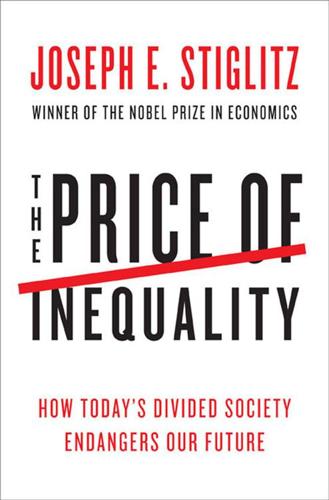
The Price of Inequality: How Today's Divided Society Endangers Our Future
by
Joseph E. Stiglitz
Published 10 Jun 2012
And once again there is neither the push nor the pull to move people to new sectors: higher costs of education make it difficult for people to obtain the skills they need for jobs that would pay a wage comparable to their old wage; and among the sectors where there might have been growth, low demand from the recession creates few vacancies. The result is stagnant, or even declining, real wages. As recently as 2007, the base wage of an autoworker was around $28 an hour. Now, under a two-tier wage system agreed upon with the United Automobile Workers union, new hires can expect to earn only about $15 an hour.13 Back to the role of government This broad narrative of what has happened to the market and the contribution of market forces to increasing inequality ignores the role that government plays in shaping the market.
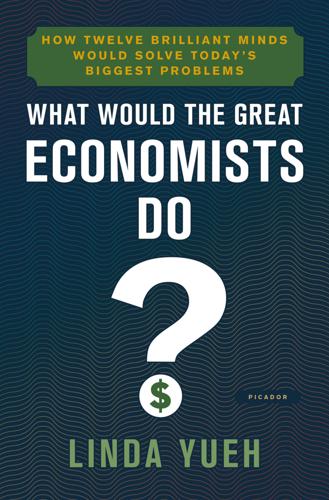
What Would the Great Economists Do?: How Twelve Brilliant Minds Would Solve Today's Biggest Problems
by
Linda Yueh
Published 4 Jun 2018
But output per worker was lower during this period since less output was demanded in a recession than in normal times. Since the 2008 crisis, output per worker grew at just 0.2 per cent per year, which is a fraction of the 2.1 per cent average growth rate between 1972 and 2007. Wage flexibility helped to maintain jobs during the latest recession, a decline in real wages making it possible to keep people in work.9 Employers hoarding workers instead of laying them off doesn’t explain the entire productivity puzzle.10 Part of the answer may be that the British economy has a large services sector in which it is difficult to measure either investment or output accurately.11 But the US also has a large services sector and doesn’t suffer from the productivity problem to the same extent, so mismeasurement is unlikely to be the whole story either.
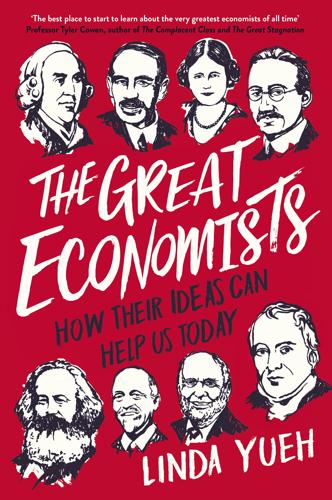
The Great Economists: How Their Ideas Can Help Us Today
by
Linda Yueh
Published 15 Mar 2018
But output per worker was lower during this period since less output was demanded in a recession than in normal times. Since the 2008 crisis, output per worker grew at just 0.2 per cent per year, which is a fraction of the 2.1 per cent average growth rate between 1972 and 2007. Wage flexibility helped to maintain jobs during the latest recession, a decline in real wages making it possible to keep people in work.9 Employers hoarding workers instead of laying them off doesn’t explain the entire productivity puzzle.10 Part of the answer may be that the British economy has a large services sector in which it is difficult to measure either investment or output accurately.11 But the US also has a large services sector and doesn’t suffer from the productivity problem to the same extent, so mismeasurement is unlikely to be the whole story either.

Rules for Revolutionaries: How Big Organizing Can Change Everything
by
Becky Bond
and
Zack Exley
Published 9 Nov 2016
America either just narrowly survived its first brush with actual fascism, or we just learned that, yes, it can happen here. Either way, we believe that the rules in this book provide some of the answers for the struggle ahead. No matter who wins in 2016, the revolution is here. In democracies, people do not accept decline forever. Real wages have been falling for forty years. Our maternal mortality rate has fallen behind every developed nation in the world and many developing nations. Forty percent of Americans will live below the poverty line at some point in their lives. Tens of millions of children who grew up in middle class homes are finding themselves firmly in the working class.

Planet of Slums
by
Mike Davis
Published 1 Mar 2006
In Kinshasa, writes Theodore Trefon, "the population refers to basic public services as 'memories.'"12 The balance sheet of structural adjustment in Africa, reviewed by Carole Rakodi, includes capital flight, collapse of manufactures, marginal or negative increase in export incomes, drastic cutbacks in urban public services, soaring prices, and a steep decline in real wages.13 Across the continent people learned to say "I have the crisis" in the same way one says, "I have a cold."14 In Dar-es-Salaam, public-service expenditure per person fell 10 percent per annum during the 1980s, a virtual demolition of the local state.15 In Khartoum, liberalization and 11 Challenge, p. 48. 12 Theodore Trefon, "Introduction: Reinventing Order," in Trefon, Reinventing Order in the Congo, p. 1. 13 Rakodi, "Global Forces, Urban Change, and Urban Management i n Africa," in Rakodi, Urban Challenge, pp. 50, 60-61. 14 Achille Mbembe and Janet Roitman, "Figures of the Subject in Times of Crisis," in Enwezor et al., Under Siege, p. 112. 15 Michael Mattingly, "The Role of the Government of Urban Areas in the Creation of Urban Poverty," in Sue Jones and Nici Nelson (eds), Urban Poverty in Africa: From Understanding to Alleviation, London 1999, p. 21.
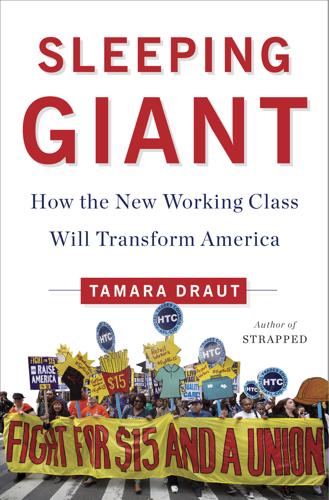
Sleeping Giant: How the New Working Class Will Transform America
by
Tamara Draut
Published 4 Apr 2016
Today the median wage for people in the working class aged twenty-five to sixty-four is $1.30 less per hour than it was in 1980 ($15.61, down from $16.91).29 Still, looking at the working class as an undifferentiated whole hides very important distinctions by gender, race, and age. Like American society more generally, there’s a hierarchy of earnings. Working-class men still outearn all other demographic groups in the working class, despite a nearly $5-per-hour decline in real wages over the past three decades. Today the median hourly wage for working-class men is $17.56, down from $22.04 in 1980. The white working class makes significantly more than any other demographic group, thanks in large part to the higher wages of men. As Table 2 shows, hourly wages for most workers have been stagnant over the past three decades, with modest increases for women and only significant declines for men.
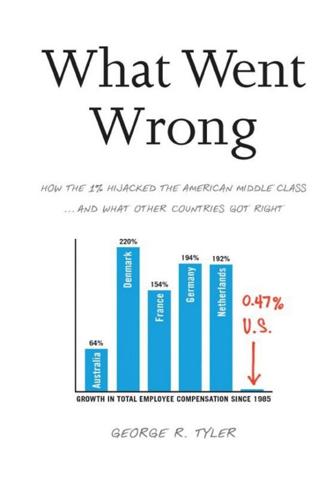
What Went Wrong: How the 1% Hijacked the American Middle Class . . . And What Other Countries Got Right
by
George R. Tyler
Published 15 Jul 2013
This issue has dogged economics since the early industrial revolution, when data first began to appear regarding wages and productivity and inspired a series of famous (among economists) debates during the 1880s: Alfred Marshall faced down enthusiasts of Henry George and John Stuart Mill, who believed that competition among workers always had the potential to cause stagnating or declining real wages regardless of rising productivity. Marshall demurred.10 Armed with decades of statistics from the era of labor shortages created by the industrial revolution then driving up real wages, Marshall argued that private property and competition were succeeding in raising wages where socialism could not.

Cultural Backlash: Trump, Brexit, and Authoritarian Populism
by
Pippa Norris
and
Ronald Inglehart
Published 31 Dec 2018
The party has been accused of carrying out acts of violence against immigrants, political opponents, homosexuals, and ethnic minorities.53 The 2007–2013 financial crisis had destabilizing effects on Greece: a large share of the professional middle class employed in the public sector experienced declining real wages and loss of job security. This country has also been at the forefront of a massive influx of sea-borne immigrants and refugees seeking to escape conflict and extreme poverty in Syria, Afghanistan, and Ethiopia, through the route across the Mediterranean. Similarly, in Spain, the rise of Podemos, founded in March 2014 by Pablo Iglesias as a progressive populist party, has been widely interpreted as a response to economic conditions, including the Eurozone debt crisis and the subsequent recession, problems of corruption and inequality, and record levels of youth unemployment.54 In the December 20, 2015 parliamentary elections, Podemos surged to receive 21 percent of the vote, 152 Economic Grievances becoming Spain’s third largest party in parliament, with 69 out of 350 seats.
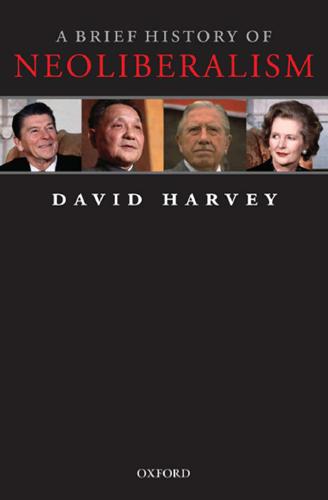
A Brief History of Neoliberalism
by
David Harvey
Published 2 Jan 1995
It was, therefore, an icon of middle-class rather than working-class unionism. The effect on the condition of labour across the board was dramatic—perhaps best captured by the fact that the Federal minimum wage, which stood on a par with the poverty level in 1980, had fallen to 30 per cent below that level by 1990. The long decline in real wage levels then began in earnest. Reagan’s appointments to positions of power on issues such as environmental regulation, occupational safety, and health, took the campaign against big government to ever higher levels. The deregulation of everything from airlines and telecommunications to finance opened up new zones of untrammelled market freedoms for powerful corporate interests.
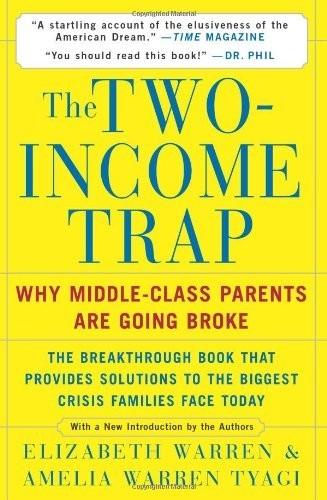
The Two-Income Trap: Why Middle-Class Parents Are Going Broke
by
Elizabeth Warren
and
Amelia Warren Tyagi
Published 17 Aug 2004
Calculated from The State of Working America 2002-2003, Table 1.32, Annual Hours, Wives in Prime-Age, Married-Couple Families with Children, and Contributions to Change, 1979-2000, Sorted by Husband’s Income. 58 Coontz, The Way We Never Were, p. 168. 59 Chris McComb, “Few Say It’s Ideal for Both Parents to Work Full Time Outside of Home,” Gallup News Service, April 20-22, 2001. 60 Both women and men who did not finish high school saw declines in real wages over the past twenty years. By contrast, among college graduates, women’s earnings have increased 30 percent since 1979, while men’s earnings have increased by 17 percent. U.S. Department of Labor, “Highlights of Women’s Earnings in 2000,” Report 952, August 2001, Table 15, Median Usual Weekly Earnings of Full-Time Wage and Salary Workers 25 and Over in Constant (2000) Dollars, by Sex and Educational Attainment, 1979-2000 Annual Averages. 61 Median earnings, which are the best measure of middle-class wages, have risen less than 1 percent for men since the early 1970s, while women’s earnings have increased by more than one-third.

The End of College: Creating the Future of Learning and the University of Everywhere
by
Kevin Carey
Published 3 Mar 2015
The value of this information in the labor market has increased markedly. The difference between the average wage for people with a bachelor’s degree and people with only a high school diploma doubled between 1977 and 2005, even as the supply of diploma bearers increased substantially. This occurred in part because of skill-biased technology change and the decline in real wages for low-skill workers. College credentials have also been locked in place as a required part of many large professions. Teachers, for example: There are 3.7 million elementary, middle, and high school teachers in America. Almost every one of them has a bachelor’s degree, and nearly half have a master’s degree.

The Age of Stagnation: Why Perpetual Growth Is Unattainable and the Global Economy Is in Peril
by
Satyajit Das
Published 9 Feb 2016
Cheaper goods and services and increased consumer choice came at the cost of displaced workers in developed countries. While it helped improve living standards in emerging nations, the influx of around 1.5 billion additional workers into the global economy reduced the bargaining power of employees in developed markets, ushering in declines in real wages. Ironically, China's new socialism did not unite the workers of the world, but divided them, triggering “the profoundest global reshuffle of people's economic positions since the Industrial Revolution.”4 Automation increased both corporate profits and income inequality. Apple's ubiquitous i-gadgets consist of components made in multiple countries and assembled in China, with the supply chain being managed in the US by Apple, which earns around 30–50 percent of the final price.
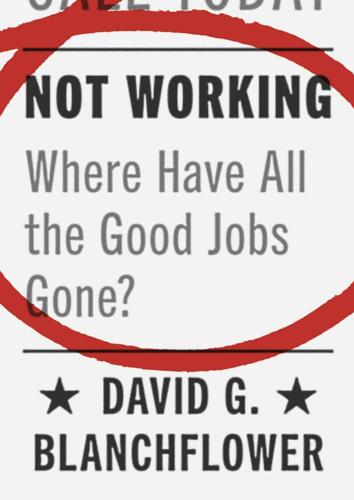
Not Working: Where Have All the Good Jobs Gone?
by
David G. Blanchflower
Published 12 Apr 2021
He was strong in cosmopolitan cities, while Le Pen was strong in small towns and rural areas that felt abandoned. Le Pen took nine of the ten départements with France’s highest unemployment rates. What happened in France looks much like what happened in the UK and the United States. Less-educated whites living outside the big cities, who had been hurt by economic decline, falling real wages, unemployment, underemployment, and a lack of good jobs, voted for populism. Once again, they were against immigration, from outside the big cities, which have prospered, and the rule of the elites. This time right-wing populism lost. There isn’t going to be a Frexit, but election winner Sebastian Kurz is president of Austria, and his party is in coalition with the far-right Freedom Party (FPO), suggesting that the French election may not be a turning point.

Hegemony or Survival: America's Quest for Global Dominance
by
Noam Chomsky
Published 1 Jan 2003
Further “green shoots” include enough repression to keep working people in line and attractive state subsidies for Western investors. These market reforms would enable Europe to “hammer away at high wages and corporate taxes, short working hours, labor immobility, and luxurious social programs.” Europe would be able to follow the American pattern, where the decline of real wages in the Reagan years to the lowest level among the advanced industrial societies (apart from Britain) was “a welcome development of transcendent importance.” With Communism’s ruins playing something like the role of Mexico, the advantages can now be brought to Western Europe as well, driving it toward the US-British model.2 Communism’s ruins have many advantages over the regions that have been under unbroken Western domination for centuries.
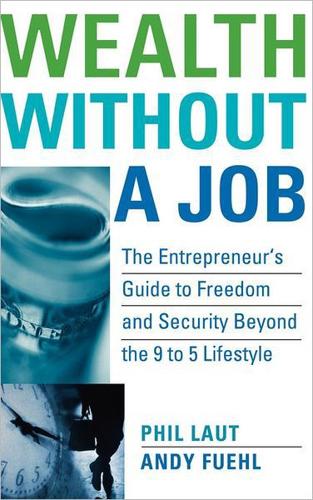
Wealth Without a Job: The Entrepreneur's Guide to Freedom and Security Beyond the 9 to 5 Lifestyle
by
Phil Laut
and
Andy Fuehl
Published 12 Sep 2004
This chapter offers a brief historical perspective of today’s economic conditions to inspire you with a sense of urgency. F igure 2.1 presents a startling graph showing the purchasing power of the average weekly wage income of the American worker, adjusted for inflation, since 1959. Here you can see the gradual decline in real wages since 1973. (Real wages are adjusted for inflation and thus reflect purchasing power.) Despite the fact that current dollar wages have been increasing, these gains have been outstripped by inflation since 1973, resulting in a gradual decline of purchasing power of about 1 percent per year. People are earning a little more each year, but each year it buys a little less.

Rogue States
by
Noam Chomsky
Published 9 Jul 2015
And it accelerates the privatization of aspirations, dissolving the sense of solidarity and sympathy, and other human values that were at the heart of classical liberal thought but are inconsistent with the reigning ideology of privilege and power. More narrowly, the US Labor Department estimates that weakening of unions accounts for a large part of the stagnation or decline in real wages under the Reaganites, “a welcome development of transcendent importance,” as the Wall Street Journal described the fall in labor costs from the 1985 high to the lowest in the industrial world (UK aside).55 Testifying before the Senate Banking Committee in February 1997, Federal Reserve Board Chair Alan Greenspan was highly optimistic about “sustainable economic expansion” thanks to “atypical restraint on compensation increases [which] appears to be mainly the consequence of greater worker insecurity,” plainly a desideratum for a good society and yet another reason for Western relativists to reject Article 25 of the UD, with its “right to security.”

Powers and Prospects
by
Noam Chomsky
Published 16 Sep 2015
Morgan as compared with the ‘stunning’ profit increase of 54 per cent for the 500 with a mere 2.6 per cent increase of employment and 8.2 per cent sales gain in ‘one of the most profitable years ever for American business’, as Fortune reported exultantly. The business press hailed another ‘banner year for U.S. corporate profits’, while ‘U.S. household wealth seems to have actually fallen’ in this fourth straight year of double-digit profit growth and fourteenth straight year of decline in real wages. The Fortune 500 have attained new heights of ‘economic might’, with revenues close to two-thirds of gross domestic product, a good bit more than Germany or Britain, not to speak of their power over the global economy—an impressive concentration of power in unaccountable private tyrannies, and another welcome blow against democracy and markets.19 We live in ‘lean and mean times’, and everyone has to tighten their belts; so the mantra goes.
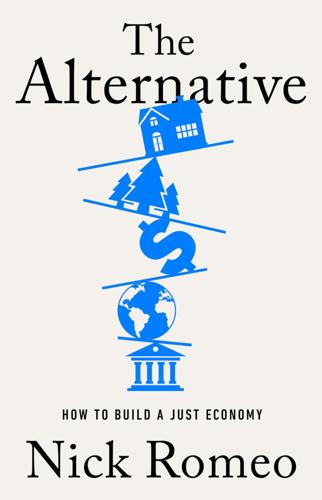
The Alternative: How to Build a Just Economy
by
Nick Romeo
Published 15 Jan 2024
Imagine that wages every year since 1968 had increased in proportion to economic productivity. If they had risen in lockstep with America’s 1.9 percent average annual growth in productivity as well as with inflation, the federal minimum wage in 2021 would have been $31.67 an hour—over four times the actual figure.10 The decline in real wages for American workers does not reflect their low productivity so much as the increasing concentration of wealth within companies. Between 1979 and 2000, worker productivity in America rose 61.8 percent while hourly pay increased only 17.5 percent.11 Those gains from extra productivity have enriched those at the top of the economic pyramid.
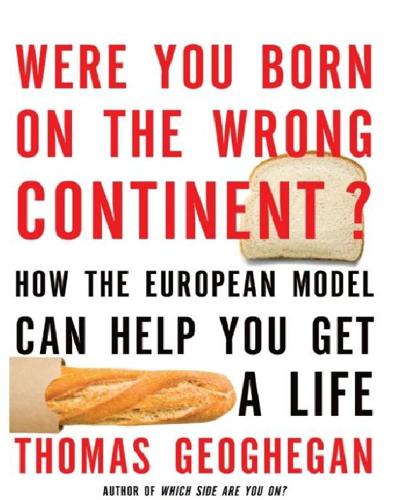
Were You Born on the Wrong Continent?
by
Thomas Geoghegan
Published 20 Sep 2011
Even if that now counts East Germans, it’s still astonishing, when in the U.S. we’ve seen our own United Auto Workers and Steelworkers practically disappear. At least there is still a membership that can march. While the Germans may have held back on wage increases at various times, look at the steady decline of real wages in the U.S. From 1973 to 2005, productivity in America went up approximately 55 percent. Put another way, output per hour went up 55 percent. Meanwhile, the average hourly wage dropped 8 percent! Harvard’s Richard Freeman, perhaps our leading labor economist, once wrote: “If in 1973 any economist had predicted such a pattern, the American Economic Association would have carted him or her off as mad.”
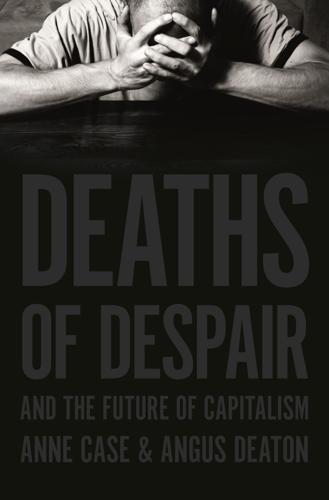
Deaths of Despair and the Future of Capitalism
by
Anne Case
and
Angus Deaton
Published 17 Mar 2020
Exactly so, say the critics of immigration.5 Having more workers to compete with at home, like having more cheap workers abroad, or more robots, can certainly reduce wages, at least in principle. Whether they have done so is the crucial question. To explain the collapse of the working-class labor market, we are looking for factors that might be responsible for a half-century decline in real wages for less educated Americans. Given this, when we think about immigration and jobs, we need to distinguish immediate and longer-term effects. Suppose that the number of jobs is inflexible over a short time period of months or even years; this is the worst possible case for the wages of those already here.

The Dangerous Case of Donald Trump: 27 Psychiatrists and Mental Health Experts Assess a President
by
Bandy X. Lee
Published 2 Oct 2017
Bandy Lee It is pretty clear what is responsible for the rise of the support for Trump, and there is general agreement about it. If you take a simple look at economic statistics, much of the support for Trump is coming from mostly white, working-class people who have been cast by the wayside during the neoliberal period. They have lived through a generation of stagnation or decline—real male wages are about where they were in the 1960s. There has also been a decline in a functioning democracy, overwhelming evidence that their own elected officials barely reflect their interests and concerns. Contempt for institutions, especially Congress, has just skyrocketed. Meanwhile, there has of course been wealth created.
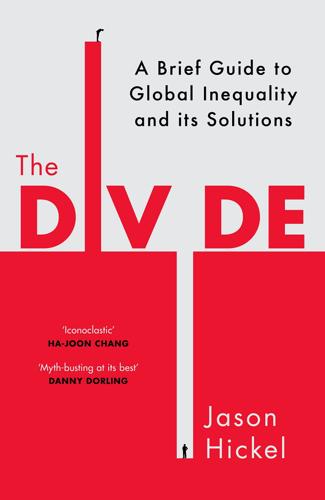
The Divide: A Brief Guide to Global Inequality and Its Solutions
by
Jason Hickel
Published 3 May 2017

Power and Progress: Our Thousand-Year Struggle Over Technology and Prosperity
by
Daron Acemoglu
and
Simon Johnson
Published 15 May 2023
Automation, offshoring, and import competition from China have also impacted other advanced economies, but in more nuanced forms. Collective bargaining did not decline as much in most of Europe. In the Nordic countries, union coverage has remained high. Not coincidentally, even though their inequality levels also increased, they did not experience the declines in real wages that have been such a major part of US labor market trends. In Germany, as we will see, companies often shifted workers from blue-collar occupations into new tasks, charting a somewhat different, more labor-friendly direction of technology. In France, too, minimum wages and unions have limited the rise in inequality, albeit at the cost of greater joblessness.

The Great Escape: Health, Wealth, and the Origins of Inequality
by
Angus Deaton
Published 15 Mar 2013
This effect will not be important for groups or occupations in which people are relatively well paid, so that there are few people below the minimum, but it will be important in low-wage areas, in low-wage occupations, or among groups, such as women or African-Americans, whose wages are relatively low.22 If the erosion of the minimum wage since the 1970s has been partly responsible for the overall decline in real wages among low-wage workers, why didn’t politics stop it from happening? One reason is the decline of labor unions, especially in the private sector. The fraction of private-sector workers who were union members declined from 24 percent in 1973 to only 6.6 percent in 2012. Although the unionization of public-sector workers increased in the 1970s, it has been stagnant since 1979; the majority of union members are now in the public sector.

The Left Case Against the EU
by
Costas Lapavitsas
Published 17 Dec 2018

Revolution at Point Zero: Housework, Reproduction, and Feminist Struggle
by
Silvia Federici
Published 4 Oct 2012
“The Debt Crisis”; Caffentzis, “The Fundamental Implications”; Terisa E. Turner and Leigh S. Brownhill, “African Jubilee: Mau Mau Resurgence and the Fight for Fertility in Kenya, 1986-2001,” in Commons, special issue, Canadian Canadian Journal of Development Studies 22, eds. Terisa E. Turner and Leigh S. Brownhill. 21. Witness the dramatic decline in the “real wage” and the increase in the rate of poverty in Nigeria. Once considered a “middle income” country, Nigeria now has 70 percent of its population living on less than one U.S. dollar a day, and 90 percent on less than two U.S. dollars a day (UN Development Program statistics from its website). 22.
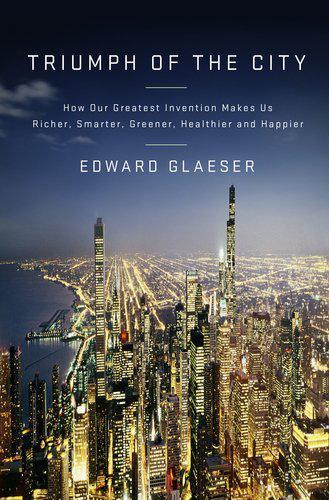
Triumph of the City: How Our Greatest Invention Makes Us Richer, Smarter, Greener, Healthier, and Happier
by
Edward L. Glaeser
Published 1 Jan 2011
Other places in that bottom-ten list, like Detroit or Trenton, have other problems, like crime and unemployment. Real wages—incomes corrected for local prices—are an effective tool for assessing urban amenities. If places have unusually low real wages, then quality of life must be high. If places have unusually high real wages, then something is wrong with those places. Somewhat paradoxically, the decline in real wages in places like New York provides us with the best evidence that, all in all, big-city amenities have become more valuable. In 1970, there was a strong positive relationship between city size and real wages. Real wages increased by 3 percent as area population doubled. The same relationship also held in 1980.
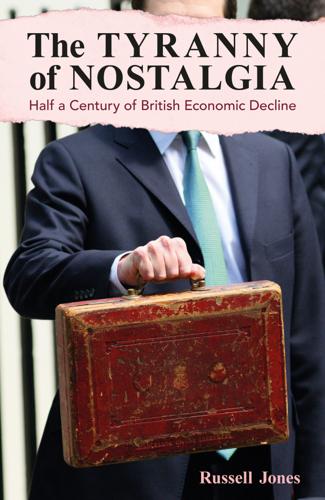
The Tyranny of Nostalgia: Half a Century of British Economic Decline
by
Russell Jones
Published 15 Jan 2023
And, unfortunately, price expectations became increasingly sensitive to actual experience. ‘Money illusion’ – the tendency to see money wage increases as real – lasted for shorter and shorter periods of time, before evaporating altogether. Workers increasingly put in wage demands to match expected rises in prices. The decline in real wages required to make unemployment-reducing policies effective became increasingly ephemeral, yet the higher prices endured. By the late 1960s the Phillips curve relationship was breaking down. It was revealed to be only an interim phenomenon. Higher and higher inflation seemed to result following each successive attempt to achieve full employment, and the employment levels achieved struggled to match what had previously been experienced.
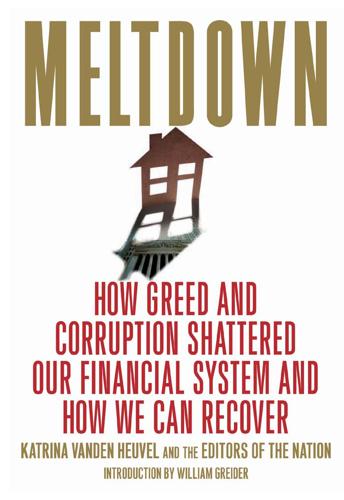
Meltdown: How Greed and Corruption Shattered Our Financial System and How We Can Recover
by
Katrina Vanden Heuvel
and
William Greider
Published 9 Jan 2009
Such price hawks are convinced that the U.S. economy cannot grow at a rate faster than 2.5 to 3.0 percent a year—quite slow by historical standards—without lapsing into a sickly inflation. If unemployment gets too low, meaning much below current levels, then workers might develop an attitude problem, and the twenty-year decline in real hourly wages might be reversed, however briefly. Wall Street wants the slow-growth, high-unemployment days of the early 1990s back again, and the Fed seems intent on fulfilling those wishes. But wish fulfillment may not come so easily. History shows that once an economic expansion is under way, it often takes far more sustained and sharp increases in interest rates to slow it down than anyone guesses at first.

The Globotics Upheaval: Globalisation, Robotics and the Future of Work
by
Richard Baldwin
Published 10 Jan 2019
Japan’s thirty glorious years, which were more glorious than Europe’s and America’s, were followed by the “Lost Decades.” Indeed, Japan has suffered one of the longest economic crises in history. Its economy actually shrank by a fifth between 1995 and 2007. Part of this came from falling prices and a declining workforce, but real wages did fall by 5 percent. Despite the economic hard times, the Japanese people are pro-globalization. A recent Pew Research poll found that 58 percent of Japanese agreed that involvement in the global economy “is a good thing because it provides Japan with new markets and opportunities for growth.”

The-General-Theory-of-Employment-Interest-and-Money
by
John Maynard Keynes
Published 13 Jul 2018
For it may be the case that the practical workings of the laws of imperfect competition in the modern quasi-competitive system are such that, when output increases and money wages rise, prices rise less than in proportion to the increase in marginal money cost. It is scarcely likely, perhaps, that the narrowing gap could be sufficient to prevent a decline in real wages in a phase in which marginal real cost was increasing rapidly. But it might be sufficient to offset the effect on real wages of a modest rise in marginal real cost, and even to dominate the situation in the event of the marginal real cost curve proving to be almost horizontal over a substantial portion of its relevant length.

The Revenge of Analog: Real Things and Why They Matter
by
David Sax
Published 8 Nov 2016
“That’s fucked-up,” she said, downing a shot of Jameson. “We put our value in technology jobs and forget those who built things. We treat them as inferior. If we continue that, our country is fucked.” The facts are on Haimerl’s side. In America and other industrialized nations, job creation has been steadily declining, along with real wages (on an inflation-adjusted basis). The GDP per person is down, inequality is up, and labor’s share of capital (the percentage of GDP that goes to workers) has steadily eroded. For all its wealth creation and gains, the digital economy, as it stands, has not delivered any substantive gains in employment and wages.

Creative Intelligence: Harnessing the Power to Create, Connect, and Inspire
by
Bruce Nussbaum
Published 5 Mar 2013
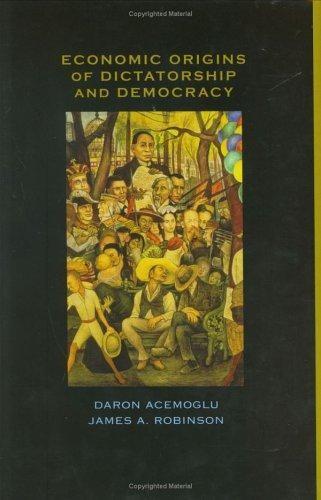
Economic Origins of Dictatorship and Democracy
by
Daron Acemoğlu
and
James A. Robinson
Published 28 Sep 2001
In 1903, a priest named Father Georgi Gapon succeeded in forming the Assembly of Russian Workers. Within a year, it had more than nine thousand members. Gapon’s movement gathered momentum in 1904 when rapid inflation caused by the war against Japan (which had started in February) led to a 20 percent decline in real wages. When four members of the Assembly of Russian Workers Commitment Problems 141 were dismissed at the Putilov Iron Works, Gapon called for industrial action. Over the next few days, more than 110,000 workers in St. Petersburg went on strike. In an attempt to settle the dispute, Gapon made a personal appeal to Nicholas II and in January 1905 he drew up a petition outlining the workers’ sufferings and demands.
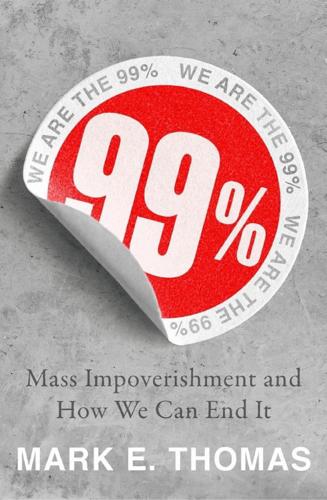
99%: Mass Impoverishment and How We Can End It
by
Mark Thomas
Published 7 Aug 2019
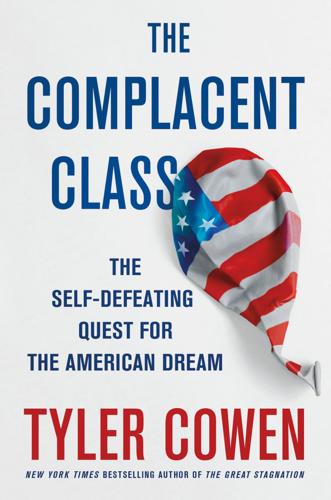
The Complacent Class: The Self-Defeating Quest for the American Dream
by
Tyler Cowen
Published 27 Feb 2017

The Global Minotaur
by
Yanis Varoufakis
and
Paul Mason
Published 4 Jul 2015
The Global Minotaur metaphor crept up on me in 2002, after endless conversations with friend, colleague and co-author Joseph Halevi. Our discussions on what made the world tick after the 1970s’ economic crises produced a coherent, albeit complex, view of the global economic system in which America’s deficits, Wall Street and the ever-declining real value of American wages, played a defining and, paradoxically, a hegemonic role. The gist of our argument was that the defining characteristic of the post-1971 era was a reversal of the flow of trade and capital surpluses between the United States and the rest of the world. The hegemon, for the first time in world history, strengthened its hegemony by wilfully enlarging its deficits.
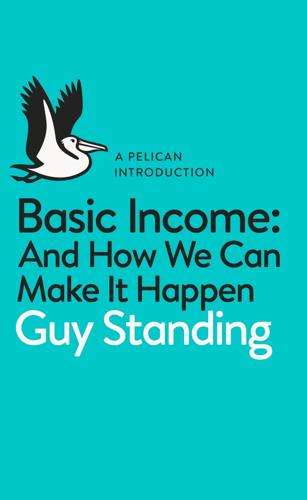
A Pelican Introduction: Basic Income
by
Guy Standing
Published 3 May 2017
The twentieth-century income distribution system has broken down, as globalization has swept forward, as ‘neo-liberal’ economics has done its work, and as the technological revolution has facilitated transformative changes in labour markets. One outcome has been a growing ‘precariat’, consisting of millions of people facing unstable, insecure labour, a lack of occupational identity, declining and increasingly volatile real wages, loss of benefits and chronic indebtedness. The shares of national income going to ‘capital’ and ‘labour’ used to be roughly stable; that old consensus has gone. We are in a Second Gilded Age, in which more and more income is going to a minority of ‘rentiers’ who are thriving from the proceeds of property – physical, financial and ‘intellectual’.
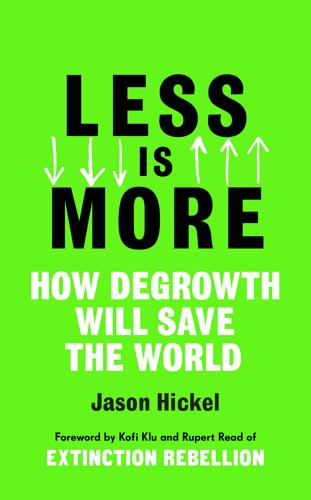
Less Is More: How Degrowth Will Save the World
by
Jason Hickel
Published 12 Aug 2020

Inventor of the Future: The Visionary Life of Buckminster Fuller
by
Alec Nevala-Lee
Published 1 Aug 2022
Fuller avoided this issue, which allowed his corporate sponsors to see him as provocative but unthreatening, and by portraying politicians as irrelevant, he implicitly absolved them of responsibility. He praised automation as a liberating force, but in the absence of social policy reform, it has led to layoffs, dehumanizing work, and a decline in real wages. The true design-science revolution depends on a culture that commits first to caring for its entire population, and not the other way around. This is the exact opposite of what Fuller claimed, largely because his career demanded it, but the evidence is overwhelming. Between the Green Revolution, Moore’s Law, and advances in energy efficiency, the accelerating breakthroughs that he predicted have come to pass, but instead of enabling mankind to make logical choices, they have deepened existing divides.

The Corruption of Capitalism: Why Rentiers Thrive and Work Does Not Pay
by
Guy Standing
Published 13 Jul 2016
Maurizio Lazzarato, an Italian sociologist, has depicted ‘an indebted subjectivity’ – a sense of facing infinite debt that feeds into a psyche of nervousness and social passivity.6 Among the causes of mass indebtedness is a historically unique situation: people are trying to maintain a past living standard in the context of declining and more volatile real wages. Since the establishment of capitalism, society has been conditioned to expect that each generation will have a higher average standard of living than its predecessors. This is no longer the case. Our perceived needs are formed by our life experience, by the living standard attained by our parents and our peers, who set the income and consumption aspirations of each generation.
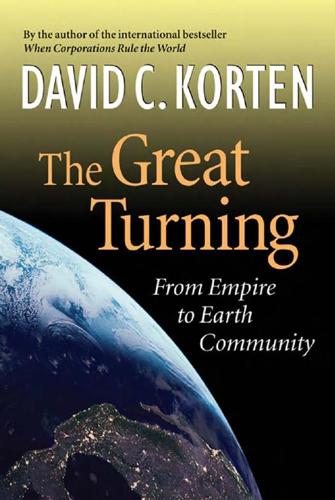
The Great Turning: From Empire to Earth Community
by
David C. Korten
Published 1 Jan 2001
Hardisty and Clarkson each underscore the essential distinction between the followers of the New Right, who are struggling with legitimate concerns, and the leaders of the New Right, who manipulate those concerns for political advantage.19 226 PART III: AMERIC A, THE UNFINISHED PROJECT Exploiting Family Breakdown The New Right has been brilliantly successful in restoring the imperial status quo in relations between the owning and the working classes. Since 1983, nearly all the gains from economic growth have gone to the very richest Americans as union membership has declined and the real wages of working people have fallen. As the wages of a typical male worker fell below the level required to support a family, women who earlier had begun to experience a new sense of freedom found that workplace participation was no longer a choice but a necessity. Many were forced into jobs paying less than a living wage.
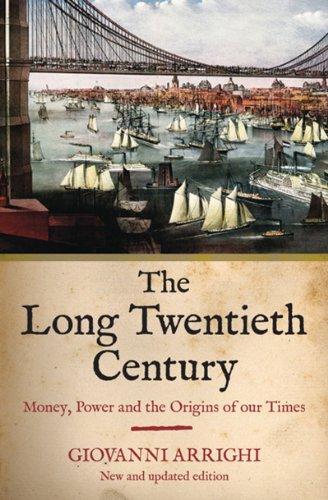
The Long Twentieth Century: Money, Power, and the Origins of Our Times
by
Giovanni Arrighi
Published 15 Mar 2010
On the other hand, as surplus capital moved ever more massively out of trade and production, the enterprises that either could not or chose not to move out of trade and production found themselves relieved of the competitive pressures that had been curtailing their profit margins. This relief materialized from the 1880s onward in a steady improvement in Britain’s terms of trade. But its most important manifestation was the overall decline of British real wages after the mid-1890s, which reversed the rapidly rising trend of the previous half-century (Saul 1969: 28-34; Barrat Brown 1974: table 14): Arguing . . . in terms of the power of organized labor, it might be suggested that during the highly competitive environment of falling prices, unions were able to squeeze profits between stable wages and market-controlled prices. . . .
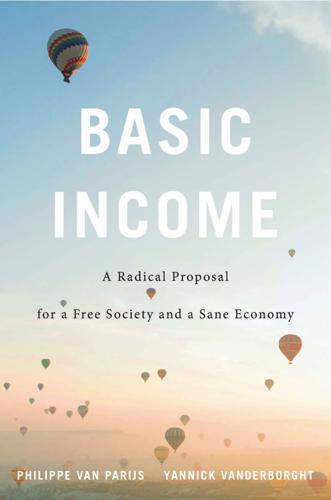
Basic Income: A Radical Proposal for a Free Society and a Sane Economy
by
Philippe van Parijs
and
Yannick Vanderborght
Published 20 Mar 2017
Raising a consumption tax Â�will tend to boost prices and thereby reduce real wages. Why would the relative scarcities and bargaining powers that boost the cost of Â�labor if workers’ incomes are taxed more not also operate as a result of a higher taxation of their consumption? Why would the supply of Â�labor be affected by a decline in marginal real wages if caused by lower postÂ�tax wages and not if caused by higher prices? If Â�there is a systematic difference in impact on the cost of Â�labor and work incentives between funding through VAT and funding through income tax, therefore, it can only be to the extent that VAT manages de facto to capture a broader spectrum of incomes at the point of spending than income tax does at the point of earning.61 Â�There is no fundamental reason for rejecting a VAT or another form of sales tax as a way of funding a basic income, but no fundamental reason for adopting it, Â�either.
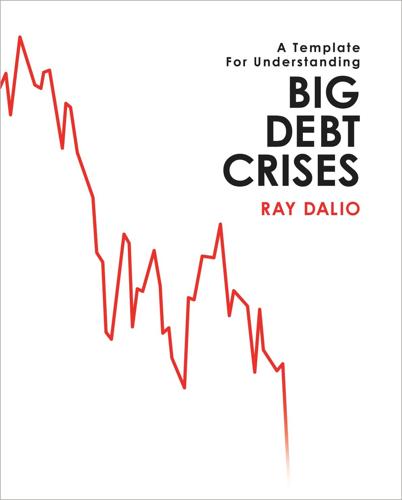
Big Debt Crises
by
Ray Dalio
Published 9 Sep 2018
Devaluations also cause assets to rise in value when measured in local currency, and they attract capital from abroad as a country’s financial assets become cheaper in global currency terms. From July 1919 through March 1920, the decline in the mark and negative real rates provided a boost to the German economy and its equity and commodity markets. The export industry also thrived, unemployment declined, and as real wages remained low, business profitability improved. You can see the decline in unemployment and the pickup in exports in the charts below. (Note that all unemployment statistics from the time only show unemployment among trade union members, so they likely understate the true amount of unemployment and hardship in German society.
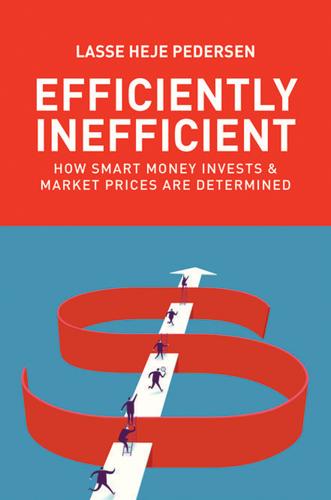
Efficiently Inefficient: How Smart Money Invests and Market Prices Are Determined
by
Lasse Heje Pedersen
Published 12 Apr 2015
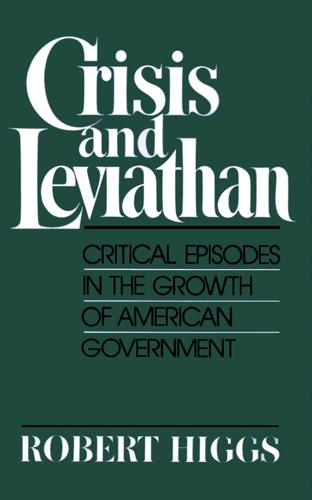
Crisis and Leviathan: Critical Episodes in the Growth of American Government
by
Robert Higgs
and
Arthur A. Ekirch, Jr.
Published 15 Jan 1987
Galbraith to invent the amusing and insightful concept of the "no-business meeting.")lO But it is possible-one cannot know for sure-that the meetings did have an important effect, ironically a harmful effect. From the employers attending his conferences the President extracted a promise not to cut wages any faster than the cost of living declined. He believed that real wage cuts, besides being unfair and productive of strife, would reduce consumer purchasing power and thereby exacerbate the recession. Whether because of fidelity to the President or for other reasons, many employers did not reduce money wages much until well into 1931. Meanwhile deflation proceeded apace.
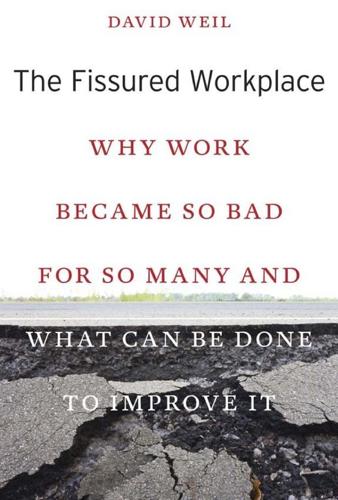
The Fissured Workplace
by
David Weil
Published 17 Feb 2014

The Great Leveler: Violence and the History of Inequality From the Stone Age to the Twenty-First Century
by
Walter Scheidel
Published 17 Jan 2017

MONEY Master the Game: 7 Simple Steps to Financial Freedom
by
Tony Robbins
Published 18 Nov 2014